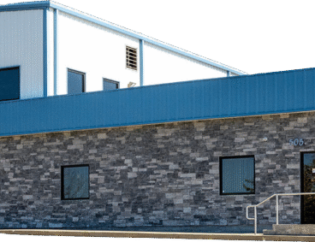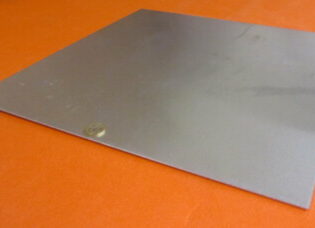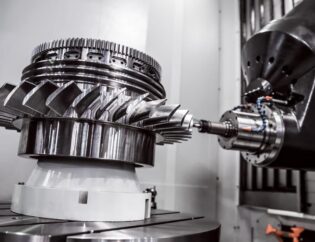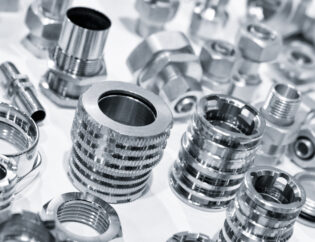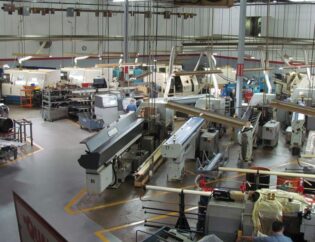Delrin machining is a crucial topic in the realm of manufacturing and engineering, particularly for those working with thermoplastics. Known for its exceptional strength, durability, and low friction properties, Delrin is widely used in various applications, from automotive components to precision parts in machinery. Understanding the intricacies of machining this versatile material can significantly enhance production efficiency and product quality.
In this guide, readers will explore the essential techniques and best practices for machining Delrin. Topics will include selecting the right tools, optimizing cutting speeds, and managing material properties during the machining process. By the end of this guide, readers will be equipped with the knowledge to tackle Delrin machining challenges confidently and effectively.
Machining Delrin: A Comprehensive Guide
Recently, there has been a great demand for plastics of high tensile strength, low friction coefficient, and high wearing resistance. The aim is to replace metals as the only manufacturing product with high strength and rigidity. Today, technological advancement offers Machined Delrin, a lightweight polymer that replaces metals in product manufacturing companies.
Delrin parts are now the versatile option in all attempts to make a tremendous high-tensile thermoplastic material as a consumer product. It is considered the most economical plastic due to its excellent machinability properties and lower cost.
In this Delrin machining guide, you will learn the basics of Machined Delrin. We’ll guide you through what Delrin is, the benefits of machining Delrin, and every other thing you need to know. Let’s get right to it!
Understanding Delrin
Delrin, also known as Polyoxymethylene (POM) or acetal homopolymer, is a semi-crystalline engineering thermoplastic. It is characterized by its low coefficient of friction, high tensile strength, and excellent wear resistance. Delrin is widely used in various industries, including automotive, medical, and consumer electronics.
Technical Features of Delrin
| Feature | Description |
|---|---|
| Tensile Strength | Ranges from 60 to 89.6 MPa, allowing it to withstand significant stress. |
| Dimensional Stability | Maintains shape under varying temperatures and humidity levels. |
| Chemical Resistance | Resistant to solvents, gasoline, and moisture, making it suitable for harsh environments. |
| Low Friction Coefficient | Reduces wear in moving parts, decreasing the need for lubrication. |
| Thermal Properties | Performs well from -40°C to 90°C, with a maximum service temperature of 76.9 to 96.9°C. |
Types of Delrin
Delrin comes in various forms, each suited for different applications. Understanding these types can help in selecting the right material for your machining needs.
| Type | Description |
|---|---|
| Delrin Homopolymer | Offers superior mechanical properties and is ideal for high-stress applications. |
| Delrin Copolymer | Provides better impact resistance and is easier to bond than homopolymer. |
| Delrin Sheets | Available in various thicknesses, suitable for CNC machining and fabrication. |
| Delrin Rods | Used for turning and milling operations, providing versatility in machining. |
Advantages of Machining Delrin
Machining Delrin offers numerous benefits, making it a popular choice among manufacturers. Some of the key advantages include:
Excellent Machinability
Delrin is a free-cutting plastic that offers excellent machinability properties, making it ideal for parts that require complex geometries or tight tolerances. Its superior dimensional stability and good creep resistance make it easy to cut or machine parts with high precision.
Low Weight and High Strength
Machined Delrin is lightweight compared to metals, yet it has a high tensile strength-to-weight ratio. This property makes Delrin suitable for parts that can withstand immense stress while remaining lightweight.
Moisture Resistance
Delrin has little or no affinity for moisture, even in damp conditions. This characteristic allows it to retain its structural integrity in wet environments, making it ideal for applications requiring a tight water seal.
Good Wear and Abrasion Properties
Machined Delrin parts do not require lubrication due to their superior friction resistance compared to other plastics. This feature is particularly beneficial for components that are always in motion.
Best Practices for Machining Delrin
To achieve optimal results when machining Delrin, consider the following best practices:
Tool Selection
Using the right cutting tools is crucial. Carbide-tipped tools are recommended due to their hardness and wear resistance. Tools with a positive rake angle help ensure clean cuts and reduce the risk of burrs.
Cutting Speeds and Feeds
Delrin can be machined at high speeds, typically between 300 and 800 surface feet per minute (SFM). The feed rate should be moderate, generally between 0.002 to 0.010 inches per revolution (IPR) for turning operations.
Cooling and Lubrication
Controlling heat buildup is essential to prevent melting or warping. Use coolant or compressed air to keep the material and cutting tools cool during machining. Water-soluble emulsions are effective for cooling and lubrication.
Workholding Techniques
Secure workholding is vital to prevent movement during cutting operations. Use soft jaws or protective padding to distribute clamping force evenly, avoiding deformation of the material.
Chip Management
Effective chip evacuation is important to prevent chips from accumulating and causing scratches or defects. Use tools with chip breakers and employ compressed air or coolant to blow chips away from the cutting area.
Applications of Machined Delrin
Machined Delrin parts are utilized in various industries due to their excellent properties. Common applications include:
– Automotive Components: Gears, bearings, and fuel sender units.
– Medical Devices: Inhalers, insulin pens, and surgical instruments.
– Consumer Electronics: Insulators, connectors, and keyboard covers.
– Industrial Equipment: Valves, housings, and scraper blades.
Conclusion
Delrin is a versatile material that offers numerous advantages for machining applications. Its excellent machinability, low weight, and high strength make it a preferred choice in various industries. By following best practices and understanding the different types of Delrin, manufacturers can optimize their machining processes and achieve high-quality results.
FAQs
1. What is Delrin?
Delrin is a high-performance thermoplastic known for its excellent mechanical properties, low friction, and wear resistance. It is commonly used in various applications, including automotive and consumer electronics.
2. How do I choose the right cutting tools for machining Delrin?
Select carbide-tipped tools with a positive rake angle for clean cuts. Ensure the tools are sharp to prevent deformation and achieve a smooth finish.
3. What are the recommended cutting speeds for Delrin?
Cutting speeds typically range from 300 to 800 surface feet per minute (SFM), depending on the tool material and geometry.
4. Why is cooling important when machining Delrin?
Cooling is essential to prevent heat buildup, which can cause melting or warping of the material. Use coolant or compressed air to maintain optimal temperatures.
5. What are common applications for machined Delrin parts?
Machined Delrin is used in automotive components, medical devices, consumer electronics, and industrial equipment due to its excellent properties and versatility.

